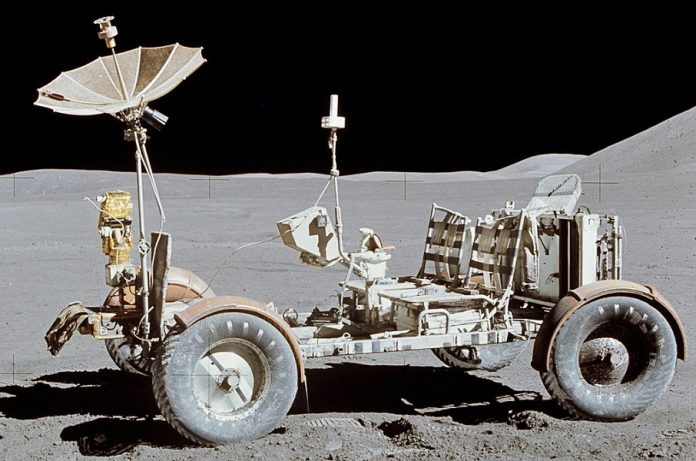
On July 31, 1971, humans rode across the moon for the first time in history. This was done by the Apollo 15 crew in a vehicle called the Lunar Roving Vehicle (LRV). Apollo 15 was the first American mission to the moon to take with it an LRV, stored in a lunar module in a folded state. Interestingly, the construction of this vehicle was initiated by the famous German scientist Wernher von Braun, who at the beginning of the Apollo mission was the director of a famous NASA research institution called the Marshall Space Flight Center (MSFC).
The Lunar Roving Vehicle (LRV) was a two-seater with four wheels made of a special aluminum-titanium-steel construction. These wheels were made by an engineer named Ferenc Pavlics, born in Hungary. His name indicates a possible Croatian origin, especially since his mother’s name was Rosina Perusich and not far from the village where he was born was the property of the Erdödy family, strongly connected with Croatia (it is known that Counts Erdödy moved their serfs during the Turkish threat from Croatian parts to Hungary to a safer area).
The LRV was powered solely by electric motors, with each wheel having a separate 190 W motor. All four motors together gave approximately 1 horsepower, but that was enough for a top speed of 13 km / h. However, astronaut Eugene Cernan briefly achieved as much as 18 km / h in the LRV, and holds the unofficial world record in the speed of driving on the ground of all alien bodies.
The LRV had a mass of 210 kg, but due to the reduced gravitational force on the Moon there it seemed to have a mass of only 35 kg. During the Apollo 15 mission, the astronauts covered a total of 27.76 kilometers with him in 3 hours and 2 minutes of driving.




